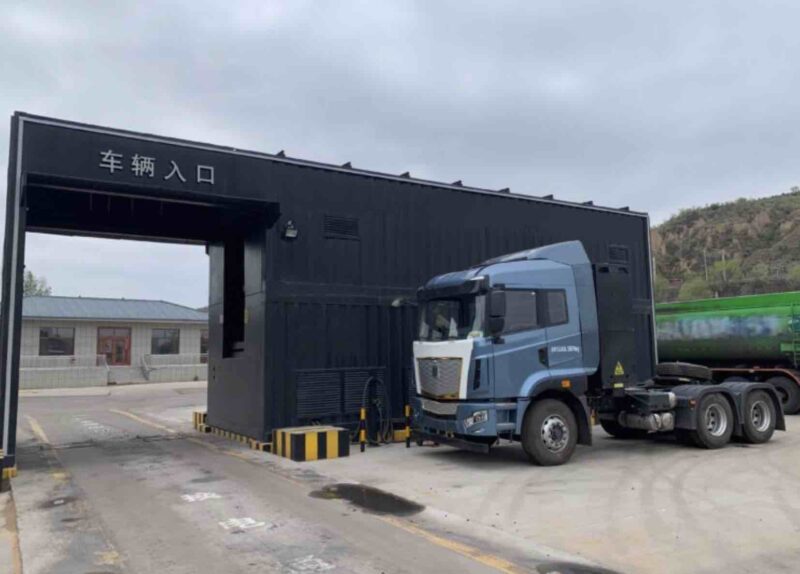Sales of battery electric heavy-duty vehicles surged in China during the first half of 2025, accounting for 22 per cent of all heavy-duty vehicle sales, up from only 8.6 per cent a year earlier.
The data was published last month by Commercial Vehicle World (CV World), a Beijing-based research firm, and which was recently highlighted by the Institute for Energy Economics and Financial Analysis (IEEFA).
CV World also revealed that the sale of new energy heavy-duty trucks reached a monthly record in June of 18,007 – including battery electric, hybrid, and hydrogen fuel cells.
And according to Christopher Doleman, a liquefied natural gas (LNG) and gas expert for the IEEFA, this trend “dims prospects” for LNG demand in China’s transportation sector – a sector which LNG proponents often cite as a key driver for global growth.
At the same time as battery electric heavy-duty truck sales are increasing, LNG-fuelled trucks are seeing their sales lose momentum, according to Doleman.
Specifically, despite accounting for a 30 per cent market share in 2024, LNG-fuelled heavy-duty trucks managed only a 26 per cent share in the first half of 2025 in China.
“This slowdown in LNG adoption suggests that fleet operators may be actively choosing electric alternatives because of the lower cost of ownership,” said Doleman.
A May report from the IEEFA found that heavy-duty trucks in China can cost anywhere from 62 to 255 per cent more than traditional diesel models, but can nevertheless yield a total cost of ownership of 10 to 26 per cent less.
“This is mainly due to the lower fuel costs and higher fuel economy of battery-electric drives compared to internal combustion engines,” said Doleman. “China’s higher purchase subsidies for electric models could also encourage fleet operators to opt for electric purchases.”
Moreover, the rapid advance of battery swapping technology and its deployment across China could also accelerate the trend towards battery electric trucks.
This is backed up by data from CATL, one of the world’s largest battery manufacturers and a major player in the battery swap sector, who claimed earlier this year that battery swap-enabled trucks reduce operational costs by RMB 60,000 ($A12,844) per 100,000 kilometres compared to traditional fuel-powered heavy trucks, a cost advantage RMB 20,000 ($A4,300) greater than that provided by LNG trucks.
The comparison was made following CATL’s launch of its new standardised battery pack for battery-swap enabled heavy-duty electric trucks.
The new standardised battery model, dubbed 75#, was launched in May and CATL says that it will be able to deliver the lowest lifecycle cost per tonne to kilometre as well as industry-leading safety.
And as part of an effort to ramp up China’s adoption of battery swap-capable trucks, CATL is planning to deploy 300 battery swap stations for heavy-duty trucks by year’s end, part of a larger effort to build a so-called “Eight Horizontal and Ten Vertical” nationwide network of swapping stations which cover 150,000 kilometres of expressways and trunk roads across China.
Such a network would serve around 80 per cent of trunk line freight capacity and serve key regions like Beijing-Tianjin-Hebei, the Yangtze River Delta and the Guangdong-Hong Kong-Macao Greater Bay Area.
Joshua S. Hill is a Melbourne-based journalist who has been writing about climate change, clean technology, and electric vehicles for over 15 years. He has been reporting on electric vehicles and clean technologies for Renew Economy and The Driven since 2012. His preferred mode of transport is his feet.

